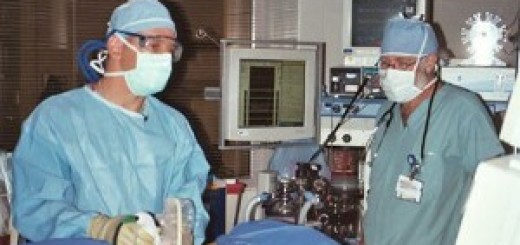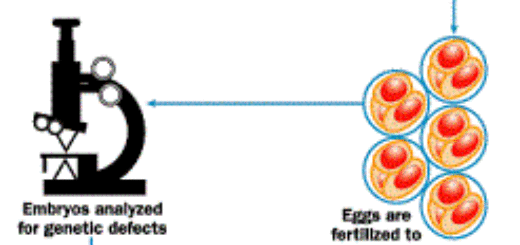Forensic pathology, Digital imaging and telepathology, Microscopes in clinical pathology
Pathology describes a complex field that involves the study of the mechanisms behind cell & tissue injury, as well as understanding how the body responds to and repairs injury, It is the study of disease and, the structural & functional changes that take place in cells and tissues during disease, Knowledge of these changes may be used to diagnose disease, ascertain the cause of death, and to better understand the causes, mechanisms and consequences of disease.
Pathology
The pathology incorporates many bioscience research fields & medical practices, It can describe work within the contemporary medical field of general pathology, which includes medical specialties that diagnose disease, mostly through analysis of tissue, cell & body fluid samples.
The person working in general pathology would be trained in the areas of laboratory analysis, such as hematology & clinical chemistry, He would have less detailed knowledge than a person who specializes in one of these fields, The pathologist can examine a tissue section for evidence of cancerous cells while a surgeon observes the patient.
The pathologist can make rapid diagnostic decisions during surgery to help determine how much tissue should be removed when excising cancerous tissues, Digital imaging & telepathology enable the examinations to be conducted from remote locations, So, pathologists won’t physically attend and wait for samples from surgery.
The medical pathologist is a medical doctor who examines body tissue and fluid to determine diseases, He takes a higher than average salary, He works in a high job-growth field, He has several specialization options, He has job opportunities in a wide variety of settings.
Medical school is costly, it requires a 3-4-year residency beyond medical school, Entrance to medical school is very competitive, There are associated risks of working with viruses, bacteria & human bodily fluids, the medical pathologist may work long hours.
Digital imaging and telepathology
Advances in software and cloud storage solutions allow the use of digital images for a wide variety of purposes in pathology, Digital imaging & telepathology help access expert opinions, So, pathologists can access second opinions in difficult cases.
Telepathology changes the day-to-day management of disease panels, Pathologists no longer need to travel over long distances to participate in case discussions, But, Digital imaging & telepathology are very expensive equipment, They are unstable technology, They lack standards and lab information systems that are not yet ready to support digitalization.
Clinical pathology is referred to as laboratory medicine, clinical pathology concerns the analysis of blood, urine and tissue samples to examine and diagnose disease, Examples of the information clinical pathology laboratories may include blood count, blood clotting and electrolyte results, The clinical pathologist is trained in microbiology, hematology or blood banking, but not at the same expert level as someone who specializes in one of these fields.
Molecular pathology
It is a rapidly expanding component of the discipline of pathology that uses molecular biology tools in addition to conventional morphologic, immunohistochemical and chemical analyses of abnormalities in tissues and cells to understand the etiology and pathogenesis of tumors, establish their diagnosis, and contribute to prognostication and therapeutic decisions for cancer patient care.
Biomarkers are a fundamental component of personalized cancer care, and the discipline of molecular pathology, therefore, contributes throughout the continuum from biomarker research to use in standard-of-care personalized cancer therapy.
Advantages of Forensic pathology
Pathology offers a wealth of information through the autopsy or postmortem examination, Manner of death as well as the mechanism of death can be deduced, and there is an opportunity to collect trace evidence, In an autopsy, the pathologist will look at tissues under a microscope in an attempt to identify disease and toxins.
Pathology will examine wounds such as bullet holes, which can determine the type of gunpowder used, what angle the bullet came from, and where the bullet went within the body, If the identity of the corpse is unknown, a DNA test can determine that as well, The pathologist should have several qualifications, the career choice requires great devotion.
Pathologist must be able to testify in court, as witnessing is one of the most useful services that a pathologist will provide on behalf of the deceased, The pathologist must be able to tolerate violent scenes and the constant presence of death, Although this is a demanding job, there is a great job outlook, and most pathologists earn six figures per year as a reward for their dedication.
Disadvantages of Forensic pathology
Forensic analysis is expensive, the tests & equipment that most autopsies require are quite costly, Mistakes are costly, the pathologists should be exhaustively precise at the risk of misrepresenting the victim, They must make conclusions, and educated guesses are sometimes wrong, and may fail to stand up in court, Each scientist will view the same data differently, and arguments may arise.
Not many people can perform this job, due to the long training period, required affluence in science, and disgusting conditions, ethical issues may arise, including conflicts with people opposed to tests such as DNA analysis on the body.
Applications of microscopes in clinical pathology
Microscopes can be used in viewing bacteria & blood cells, The pathologist makes macroscopic examinations of tissues removed during surgery or after death, examines tissue slices (frozen or fixed) under the microscope, examines exfoliated cells (cytology), analyze body fluids for abnormal levels of chemicals and/or the presence of crystals (using polarizing microscopy), and carry out molecular studies to diagnose disease.
Histological staining techniques are used to identify abnormal cell & tissue morphology under the light microscope, Light microscope can be used to offer information about the activity of cells and to look at very small structures such as nanostructures, It can be used in gemmology, metallurgy & chemistry, it is one of the least invasive techniques for looking at living cells.
Different adaptations can enhance images, such as phase-contrast microscopy, which offers a contrast between cells and the solution they are in, High-resolution 3D imaging can also be used to observe organisms over some time.
Fluorescence microscopy is used to observe specimens that fluoresce and emit light of a different colour, The number of fluorescent proteins has increased, expanding the kinds of sample types that can be looked at, from single molecules to whole organisms, In addition, unwanted side effects have been reduced, However, one limitation of fluorescence microscopy is the overlap of fluorophores, which can make analysis more difficult.
Microscopy can be used to explore the time- and space-related dynamics of molecules, Localizing single molecules such as RNA and proteins provides insights into how cells and tissues are organized at the molecular level, High content screening (HCS) can use microscopy to identify and study substances in cells such as peptides, RNA and small molecules.
Automated microscopes can be used to look at thousands of compounds or genetic alterations and the effects these have, Information about the structure, heterogeneity, kinetics and more can be obtained from the resulting images, HCS allows for fast analysis of the genome and can identify molecules that have effects on the majority of the 21,000 gene products found in cells.
HCS can be used by biotechnology and pharmaceutical companies to screen for potential drug candidates, It allows researchers to consider and rule out many different molecules in a short time, It can be used to look at genes to find out more about the genome and identify sequences that alter cell phenotype and lead to different diseases.
You can download the application on Google Glay from this link: Science online Apps on Google play
What are use and importance of Microscopes?
Light microscope and Electron microscope
Compton effect, Photon properties, Electron microscope and Optical microscope



